PHILLIPSBURG, NJ – The Delaware River Joint Toll Bridge Commission (DRJTBC) is planning to rededicate its iconic Northampton Street Toll-Supported Bridge (“the free bridge”) between Easton, PA. and Phillipsburg, N.J. with an invitation-only ceremony on the evening of November 9.
The event is expected to feature a countdown inaugural lighting of the bridge’s programmable color-changing architectural lighting system by former world heavyweight champion and businessman Larry “The Easton Assassin” Holmes. Other invitees include state, county, and municipal officials from New Jersey and Pennsylvania, chamber of commerce representatives, a Lafayette College engineering professor, and DRJTBC commissioners. The speakers list includes Pennsylvania Transportation Secretary Michael Carroll.
The pre-lighting ceremony and speeches are scheduled to begin 4:30 p.m. Thursday, Nov. 9, in the Riverside Way municipal parking lot immediately upstream of the bridge in Phillipsburg. Media is encouraged to attend; the location affords clear vantage points of the bridge’s new lighting system.
The architectural light system was one aspect of a broader $15.4 million rehabilitation project that began in the fall of 2021. Other major tasks included – but was not limited to – the following:
- Installation of new flanking slip-resistant foam-core fiber-reinforced walkway panels;
- Steel structural repairs and repainting;
- Replacement and upgrading of electrical systems;
- Replacement of roadway and sidewalk lighting.
The bridge is the Commission’s second oldest superstructure. It was constructed by the Union Bridge Company for the former Easton Delaware Bridge Company in 1895 and 1896, replacing a wooden bridge that stood at the location for nearly 90 years. The current steel cantilever-truss bridge’s previous rehabilitation occurred in 2001.
The 550-foot-long, 36-foot-wide bridge is the Commission’s busiest non-toll crossing. The bridge has a three-ton weight limit and a 15-mph speed limit. Bridge monitors are stationed at each end of the bridge on a 24/7 basis to prevent crossings of overweight vehicles.
